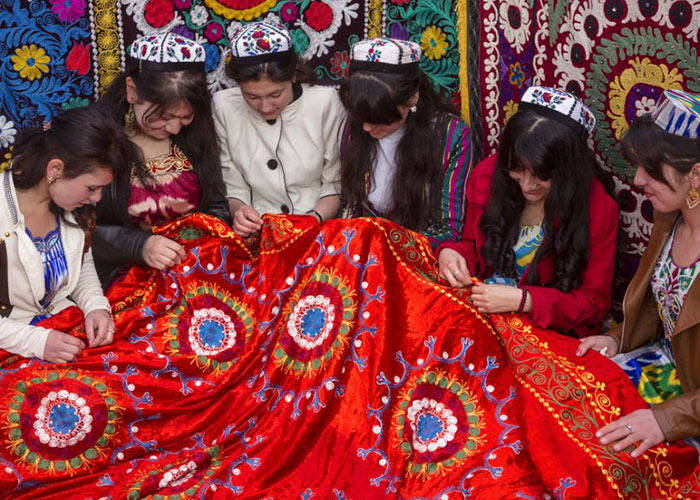To this day, Tajiks like to wear their national dress on holidays, respectfully referring to the wedding traditions and ceremonies at birth.
National songs take pride of place among the Tajik people. Their folk instruments still delight guests at wedding ceremonies and other celebrations. For instance, dutor and tanbur, karnay and chang, rubob and nai, tablak and doira.
Tajik dance dates back to the middle Ages, accompanying both happy and sad events in the Tajik people's lives.Dancing has several directions. They are divided into Bukhara, Pamir, mountains, and so forth. It all depends on the location of the local residents. At the same time, it is changing not only the national dance style but also the costumes with the movements of the dancers.
The oldest Tajik dance is considered a dance-pantomime. Dancers imitate birds and animals.
There are ritual dances. For example, rakskhoi Maros. It is performed around the deceased. There is dancing with household items and tools. Shamsherbozi, kordbozi, raks bo dutor, raks bo gizhzhak, otashbozi, and so on.
However, that is not all. The Tajiks also present a separate line in the dances, which are closely intertwined with strictly theatrical productions. Ushtur bakator, aspakbozi, kishtibozi are considered very ancient dances of the ancient people.
Theatrical performances, as well as dancing, have entered modern society since the Middle Ages. This, we are told, is the ancient wall paintings and rock carvings.
Ancient mythical creatures, often depicted with animals and hunting scenes.
Theatrical performances were divided into drama and genre scenes, comic performances, and pantomime.
The traditional clothing of the Tajik people has its own characteristics and different cuts and embroidery depending on the region. It has different styles, embroidery, and color gamut.
All the ceremonies were closely linked. It was impossible to hold a rite of skipping over the previous one.
For example, courtship began at a time when the future couple were still children. Courtship was divided into two types: "matchmaking juvenile" and "matchmaking from the cradle."
During "matchmaking juvenile," the mother of the future bride and groom stand together with the hems of their shirts tied up in a strong knot.
After one month, the ritual was repeated. Before the meal, guests divided a flat cake in half, and old sages read prayers.
Presentation of the dowry or bride ransom, without which no wedding ceremony can take place. The marriage is usually prescribed in the autumn.
A wedding in Tajikistan is not much different from a wedding in neighboring Uzbekistan. In the morning, preparing pilaf, and in the evening, inviting the mullah (cleric) for the signing of the marriage contract.
Their rituals and customs accompany the period of pregnancy, childbirth, and a child’s life. Dressing the first shirt, bathing, naming, and even lying in the crib are all examples. This period was completed by the rite of chilla-gurezon. For the first time, the mother left the house with her child and went to visit neighbors.




